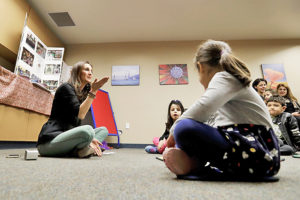March 15, 2019

One of the biggest challenges faced by expatriate Iranian communities is how to preserve Persian culture and pass it on to succeeding generations.
If history is any guide, the expats are not likely to have great success in the United States.
The first great waves of immigrants to the US in the 19th Century were from Ireland and Germany and they produced thriving cultural communities. But before long, they intermarried with each other and with older English ethnic Americans and their distinctive immigrant ethnicity has been lost in what is commonly called the Melting Pot, a stew of cultures where people have names like Seamus Frankfurter and Hans McGilli-cudy.
Later came major waves of Italians and Jews, not to mention smaller waves of Scandinavians, Poles, Czechs and assorted other ethnicities. They have largely disappeared in the Melting Pot, too. Jews remain distinctive because of their faith—but few Jews go to synagogue and a majority of Jewish marriages in recent decades have been to non-Jews.
The last third of the 20th Century saw a triple wave of immigrants fleeing oppressive regimes in Cuba, Vietnam and Iran. They are all now facing the threat of the American melting pot as the second and third generations are raised as Americans with few connections to the old country beyond some favored dinner dishes.
There are two ethnic groups that have managed to survive remarkably intact despite being generations in the United States—the Greeks and the Armenians. The main reason for that success is that each has its own ethnically-based religion—and those churches remain huge centers of social activity, where children learn the language and culture—and young boys and girls meet each other and marry within the faith.
Few Iranians attend Shiite mosques regularly and so lack the close and constant social ties that bind the Greek and Armenian communities and encourage marriage within the group.
But many Iranians in North America are fighting the Melting Pot trend and struggling to preserve a culture that goes beyond snacking on tadiq.
Minoo Sharifan, now 67, came to the United States in the 1970s for graduate school, and like many others, wound up staying after the revolution.
Many like Sharifan seek to build a connection to their Iranian heritage and culture among their American children and grandchildren. Sharifan oversees the Persian collection and programming for a library in Orange County, south of Los Angeles, that hosts a weekly story time for Iranian-American children that she began six years ago.
At a recent gathering, a dozen young children sat cross-legged on the floor, listening to a parent volunteer read the Farsi-language version of the storybook about “Elmer” the patchwork elephant. One girl performed a Persian dance for the group, and the children twirled scarves and sang in Farsi.
“For younger kids to see kids their age coming to the library and speak Farsi, it’s a good feeling for them and it makes me happy,” Sharifan told The Associated Press. “For us coming from another country, sense of belonging to the group is very important.”
Like Cuban refugees, many Iranians who came to the United States thought they would soon return to Iran. But to do so now would mean leaving their grandchildren—abandoning them to the Melting Pot.
Many Iranian immigrants recall being taunted as children after the US Embassy in Tehran was seized and Iranians were tabbed as terrorists. In some ways, this was odd. Americans understood that Cubans who came to the United States were fleeing Castro and no one screamed at them that they communists. But few seemed to understand that Iranians who came to the United States were also fleeing the regime there, and many got punished as if they were Khomeinites.
But bias against immigrants isn’t unique to Iranians. The grandmother of the editor of this paper was a young Irish girl when she moved to Philadelphia in 1903 and walked the streets of her new neighborhood noticing signs in the shop windows that said, “Waitress needed. NINA,” and “Job available. NINA.” She went home to ask her husband who this Nina woman was and he was embarrassed to have to explain it was an abbreviation for “No Irish Need Apply.” (She married a German who knew he had to stop speaking the language in public April 6, 1917, the day the US declared war on Germany in World War I.)
“In economic terms, it has been a pretty successful community,” Persis Karim, chair of San Francisco State University’s Center for Iranian Diaspora Studies, told the AP. “However, we have been dogged by 40 years of bad relations between the United States and Iran. People feel like their place in the US has kind of continuously been under question, or not completely at ease, because of this bigger relationship between these two countries.”
After the revolution, many Iranian immigrants sought to distance themselves from the upheaval in their homeland by calling themselves Persian. The second generation, Karim said, has identified more often as Iranian-American to show pride in their heritage and their US citizenship.
But these newer generations have grappled with the sense that no matter how American they become, they are perceived as different by American society, said Neda Maghbouleh, a sociology professor at the University of Toronto, Mississauga, who was born and raised in the United States and wrote a book about Iranian-Americans’ experiences.
“The kind of exile identity that first generation Iranian-Americans have had has been something that has not necessarily translated to second generation use,” she said. “They’re products of an environment that has been incredibly hostile to the Middle East more broadly, to Iran more specifically.”
“The second generation has in many ways seen itself as a racial minority,” she said.
The Iranian-American community is itself diverse and includes Jews, Muslims, Christians, Baha’is and Zoroastrians with diverse views but a shared tie to Iranian culture. And it is that culture that many see a need to present to the youngest generation as it finds itself swimming in the Melting Pot.
In the Southern California city of Irvine, an Iranian community organization offers weekend language and dance classes. At the library, families bring their children to mark key moments throughout the year, such as Now Ruz.
In Berkeley, just across the bay from San Francisco, a preschool has grown to include a private elementary school program that immerses children in Farsi, Arabic and Hebrew. Yalda Modabber, executive director of Golestan Education, said she started the preschool more than a decade ago when she wanted to teach Farsi to her first child. She recently expanded to elementary school grades at the urging of parents who wanted their children to continue the instruction.
Aliah Najmabadi, 40, has sent her two older sons to the Berkeley preschool. Born in the US, Najmabadi said her Iranian father came to the country to study in the early 1970s and met her mother, a South Dakotan of Norwegian descent.
While she grew up speaking English, Najmabadi said she was surrounded by the Persian culture and language when her father’s family came over from Iran in the years after the revolution, and she wanted to learn more.
She went on to study Farsi, but said she still struggles to understand everything her Iranian grandmother says. Now, her 8-year-old son helps translate, she said, and her father — who sometimes questioned her desire to learn the language — has been moved emotionally.
“Once my son started speaking fluently, he was floored. His heart melted,” Najmabadi said of her father. “As people get older in the community, I think it is really important for my kids to know the language.”
The language poses an extra problem. Italians, Cubans and Vietnamese don’t have to learn a new alphabet to get familiar with the family language. But the problem is not insurmountable. After all, Greek and Armenians must learn a new alphabet—and do so in their churches.























